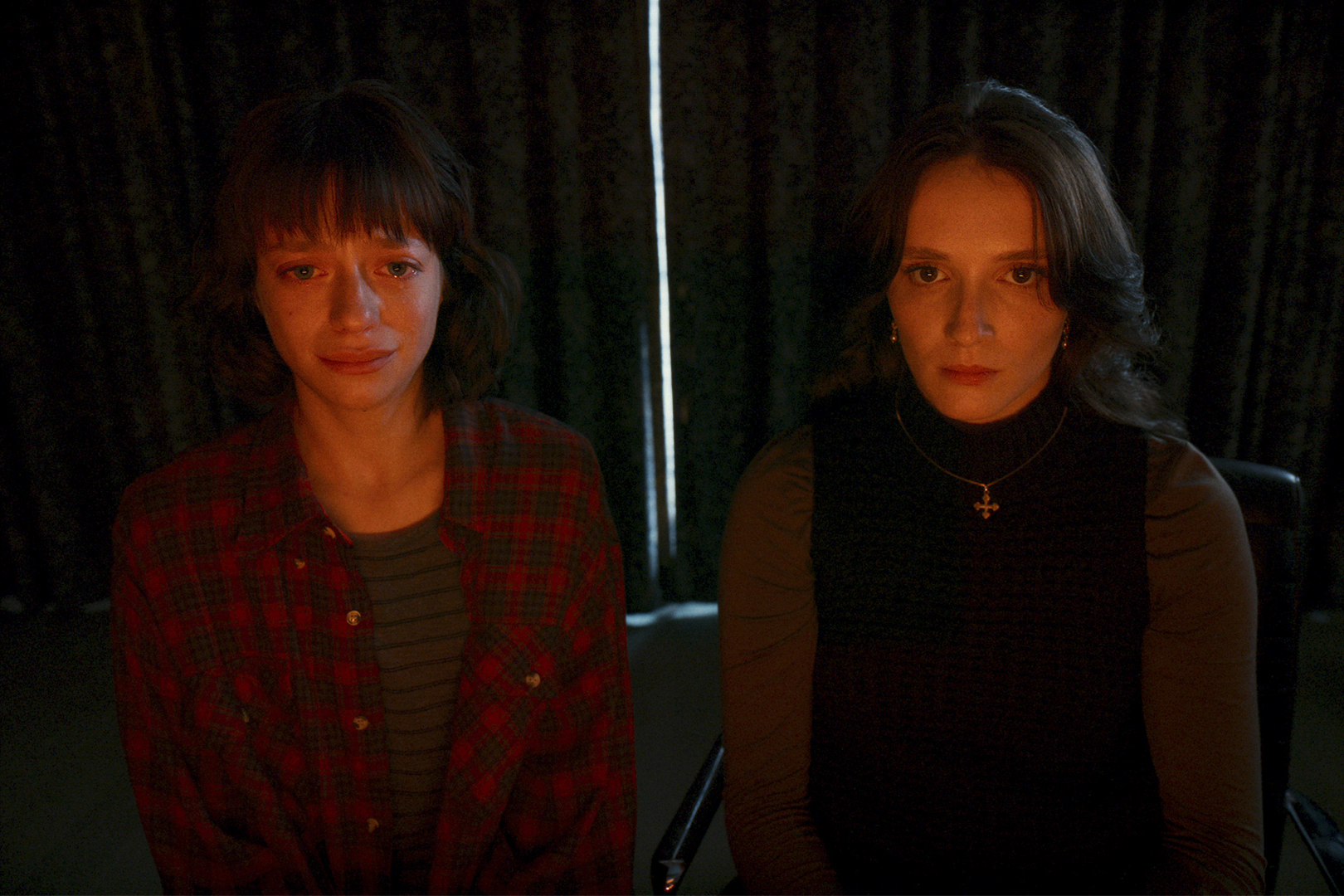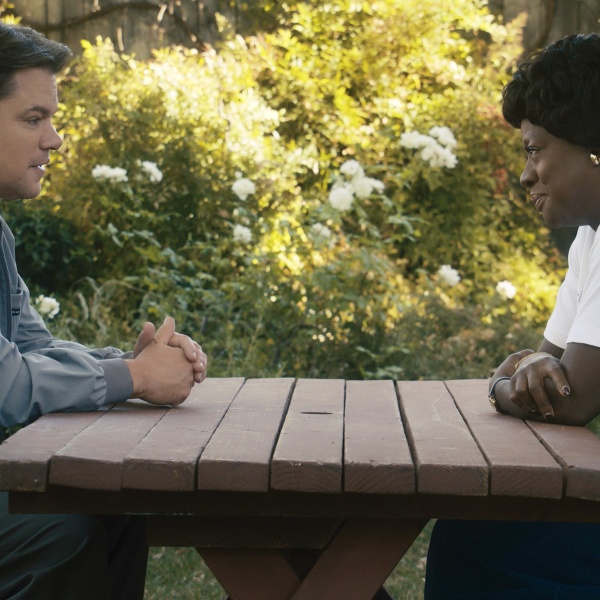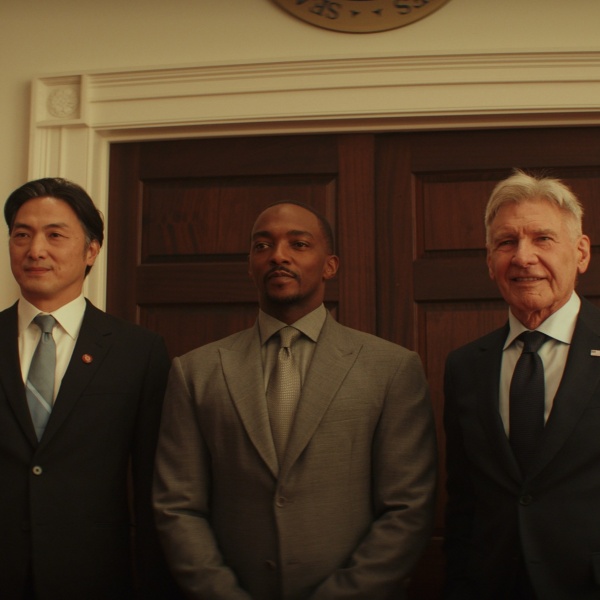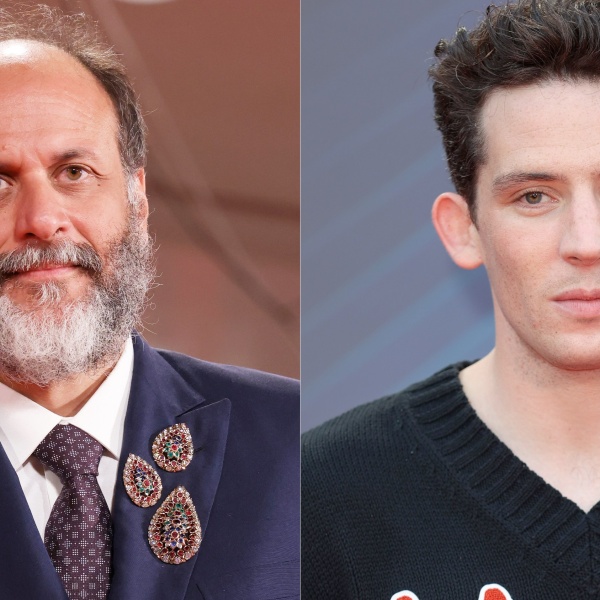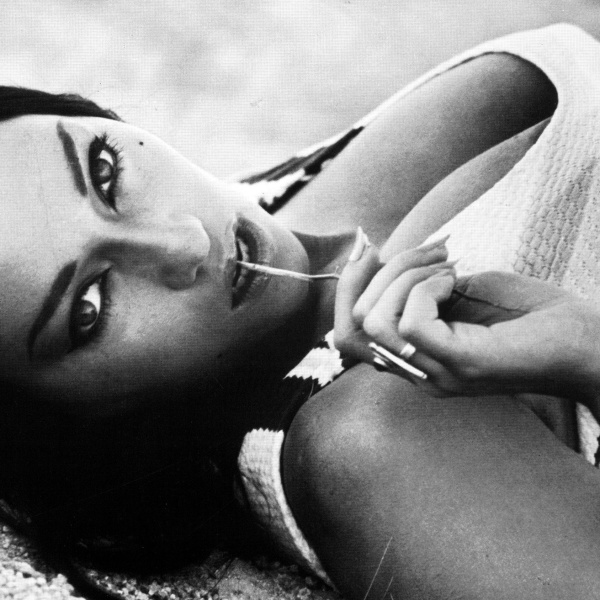Editor’s Note: The following story contains some spoilers for “Red Rooms.”
If the definition of the word “hybristophilia” in the dictionary doesn’t appeal to you, read no further.
From a face-powdered Nicolas Cage in “Longlegs” to a hot Josh Hartnett in “Trap” and a loose riff on Night Stalker Richard Ramirez in “MaXXXine,” 2024 has seen a return of the serial killer movie to the mainstream. Enter “Red Rooms,” a perverse French-Canadian indie off the 2023 festival circuit, to flip the script on the genre — to squarely put you in the perspective of a true crime junkie chasing the total experience — and make you feel even more dirty and lost than any of those films ever could. It’s a movie even the director felt “sadistic” making.
With a great command of style, writer/director Pascal Plante‘s moody and morbid thriller puts you in the eyes and ears of Kelly-Anne (Juliette Gariépy), a hacker and seemingly sociopathic woman obsessed with a serial killer currently on trial — and for alleged staging and distributing snuff films of his adolescent-age female victims’ grisly deaths. Kelly-Anne is a model on the side, addicted to exercise and self-discipline to the nth degree, but her full-time job is an addiction to internet poker and a parasocial attachment to Ludovic Chevalier (Maxwell McCabe-Lokos), the supposed murderer encased in a glass box while his alleged victims’ mothers are forced to watch said snuff films in a packed courtroom.
Each day, Kelly-Anne sleeps on a dumpster outside the courthouse in order to get the best seat in the house, and the panopticon-like arrangement of Chevalier, along with his shaved head and unfeeling eyes, recall Soviet killer Andrei Chikatilo, who also butchered young female victims. But crashing Kelly-Anne’s scene is the more naive parasocial parasite, Clémentine (Laurie Babin), who’s in love with the killer from afar, like those women who marry murderers in prison. Clémentine is in for a terrible shock to the system when she follows Kelly-Anne home and insists she show her the snuff films — which Kelly-Anne has cleverly extracted from the dark web and onto a hard drive — which play out only in neon-red reflection from the computer screen onto their faces. The horrible sounds are enough to stoke our imaginations.
All of that’s to say that Plante is feeding off true crime audiences’ — and it’s an audience this movie deserves to be in front of ASAP — appetite for the gory details. While at the same time, like Michael Haneke’s “Funny Games,” denying us those details. The movie, though not exactly shaking up the box office since opening from Utopia in early September, has steadily gained a Film Twitter fanbase of advocates. It’s easy to see why — “Red Rooms” is a sophisticated thriller in the vein of David Fincher or Michael Mann but with giallo-adjacent expressionistic flourishes that coalesce in a chillingly ambiguous finale.
Based in Montreal where “Red Rooms” shot in 2022 over just 23 days, filmmaker Plante went deep with IndieWire about crafting the movie, its opaque heroine, and even the anguished foley sounds of the snuff films’ victims’ harrowing off-camera deaths.
This interview has been condensed and edited for clarityand length.
IndieWire: “Red Rooms” has done modest business at the box office in the U.S. and abroad but it was a smash at Karlovy Vary and has become a bit of a viral talking point on Film Twitter. Have you been tracking?
Pascal Plante: When you’re working on it, you’re like a bulldog, and you’re just trying, in bits and pieces, to make it as impactful and potent as possible. When we did our first team screening — of course the audience is sold because they worked on the film — I sensed they were energized and very proud of it, and it felt like the film [could have] an impact. We had our world premiere at Karlovy Vary in July… It’s the kind of film we realized people want to talk about it afterwards. At Karlovy Vary, at every screening, there would be more people in lines and who couldn’t access the rooms because they were overflowing … I was looking at the reviews because they make or break a bit, especially early in the life of a film. At first, I was reading the user reviews on Letterboxd, and then I, completely cold, stopped for a long while. Only now during the U.S. release, I went back to my old patterns of reading the user reviews. I’m just relieved in a way that it connects with people, and of course, it’s not going to appeal to everyone, which is super healthy. I can be critical of films that are universally praised as well.

There’s a scene in the movie that causes most audiences to gasp — when Kelly-Anne shows up in court dressed as one of the killer’s victims, who she already resembles anyway. How did you pull that off?
People react viscerally to that scene. The way I remember movies … I don’t really remember the storylines all that much. I remember scenes and images. More and more, I just basically write around a few key core ideas that are visual or just these key moments. Some filmmakers do it more radically. “Eyes Wide Shut” is a film about one scene. It’s all about building up to one big-ass, crazy scene, and then you basically debrief that one scene for the rest of the film. That’s insane. I try to work around those key moments and have them make as much impact as possible. We could only do one take of that, and it ended up working.
What about the one-take opening courtroom scene? The camera hovers around the room, ghostlike, as the defense and prosecution lay out their respective cases. You constructed this on a set, unlike other scenes shot on location around Montreal.
We did many, many takes, but we only finished two takes, and the one we kept in the film with the little happy accident, when Juliette has this genuine emotion, a tear flowing down her eyes at the end. That’s something where I’m being humbled even by the images we’ve created because some people give meaning to stuff like that, something in the background I may have missed. It’s on a Technocrane [a remote-controlled telescopic camera device], and the courtroom is a set, so we built it so we could remove walls and have the camera float around. Philosophically, why the long take or why that technique. I don’t like flashy long takes because if you want to just do flashy like “Russian Ark” has already been made, “Touch of Evil’s” opening has already been made. You don’t have anything to gain to try and showcase your skills. But long takes, when they work is when I get lost in them, when space and time blur, I get hypnotized. You’re lost in that space of sound and image. I tried to create that logic where it’s very slow and choreographed but also that thematically we’re in the head of Kelly-Anne, it’s like this ghost floating around or this robot. She’s very much in control, so we wanted to have a camera that was hanging from above, not on the ground, kind of just floating. That inspired the technique we used.

The scariest scene of the movie for me is when Kelly-Anne uses her hacking skills to figure out the door code to the victim’s mother’s house. We are so careless about where we leave our passwords. Somebody could probably figure out how to get into my apartment just from trawling from Gmail.
We digitize everything. I don’t want to sound older than I am already, but it’s more than ever being tech-savvy, proficient, almost like a hacker-type person, is almost a superpower. Kelly-Anne is filmed like this otherworldly, super-powerful entity, very enigmatic but she has that sense of power to her. I did lots of research about hackers, the mindsets, the culture and all of that, and I didn’t want the hacking to feel like brute force hacking, “Matrix”-like numbers running in front of the screen. That’s less relatable. What is relatable is the social engineering side of hacking where I basically use the flaw of the person against them, and now, our flaws, we put so many traces of ourselves out there, my social security number, I’ve sent it by email. I don’t change my passwords every three months. My webcam is open. I don’t have the tape on it. It’s so fascinating that for the sake of what is convenient and efficient, we gladly sacrifice all things that are private and that should be private just for the sake of us going about our own lives in an efficient way, but somebody can really take advantage of it. But I’m not preachy about that. I’m not even myself changing my path. I’m not using Proton Mail. I’m using Google. It’s a never-ending battle. If you want to fight that battle, you’re in for a long one.

You’ve used the term “hybristophilia,” or the disorder where you’re turned on by violent crimes, to describe Kelly-Anne and Clémentine. Parasocial attachment is one I’d throw out there especially in the age of toxic fandom.
“Parasocial” is trendier now than in 2021 when I was writing the film, but the concept is completely the same and valid. There are a few things about Kelly-Anne. She started rooted in reality. In the research I did, there’s a spectrum of potential fans of killers: Kelly-Anne and Clémentine are opposite sides of the spectrum. Clémentine is in total denial, blinded by love. I don’t think she would call it love, but maybe that’s what it is, but just to have the weird mental gymnastics to justify everything. Some people watch the [Luka] Magnotta — [a famous Canadian serial killer] — video and are like, “There’s somebody behind the camera pulling the strings.” Some people go at length to come up with wild theories, so Clémentine is more on that side.
But then the more sociopathic side of the spectrum might be Kelly-Anne. I don’t label her because that’s oversimplification. Life is complex. I’ve played violent video games, and I’m not a violent person. When you blame it on something very narrow, you just don’t have a real conversation. But still, I’m going to give a few labels to Kelly-Anne just because that was the basis and then we expanded on it with Juliette [Gariépy], who plays the role. [Hybristophilia] is when you are turned on by horrible crimes. She’s a junkie about something. We can call it adrenaline potentially. Everything she does, from the gambling to home-invading to what she does in the courtroom with the cosplay. It’s almost nurturing this sense of danger in order to feel alive. She’s in such major leagues that she needs a higher dosage. If you compare that to any other addiction, there’s a term for it when addicts … need more and more [after the first hit] to try and have the same rush. She’s obsessively chasing something but she has to go into lower and lower depths.
How did you flesh out the character? She’s a bit of a cipher, living a lonely life in a Montreal high rise.
I didn’t talk about the backstory with Juliet. I let her figure her out. We didn’t over-analyze her at all because at the end of the day, it’s the fun of doing a genre film, an expressionistic film that’s not rooted in reality, that creates an alternate universe that is colorful, so I can play with the cinema language. That’s, at one point, what took over. Research got me this far and got me depressed but then making a genre film that’s expressionistic, that’s what’s fun. If only for my mental health’s sake, this needed to take over at one point. This is why Kelly-Anne is filmed in such a way. It’s a ghost story.

How did you create the sounds and images of the snuff films, filled with screaming and blood that is mostly implied but still horrifying?
For starters, I was terrified to record teenagers doing that. You don’t need to be method at all in anything doing a film. It’s not because we are doing a dark film that we need to be dark ourselves or put people in dangerous or unsafe spaces. I was still dealing with a heavy scene. I tried to do it as morally, rightfully as possible and yet I also wanted this thing to be very horrible. That’s the point. If you as an audience wanted to see this scene yourself, well, maybe not only am I not going to give it to you, I’m going to shake you to why I was wanting you to potentially even see this. It had to be horrible. I was personally petrified to go into a studio and do voice acting with 13-year-olds.
So it sounds like you had a harder time than the voice actors did.
Once they get started, they understood it, they’re intelligent enough already. They left with a smile on their faces. It’s make-believe at the end of the day. I thought it would be very soul-crushing — it wasn’t. They had fun screaming into the microphone but when we did the sound design, putting it all together with the drill sounds, this is where it got weirder. I keep saying I try not to be sadisitic. I try to walk the rightful path with this film. When we were doing the sound design, I was like, I want to hear more blood. Let’s put the drill louder. I started to get a bit sadistic myself. I wanted this thing to be so potent that I even sometimes had to sit back, relax, breathe out, and be like, I don’t need to be that intense. Why are we bloodthirsty while we’re creating that kind of stuff? It’s so easy to get carried away.
It’s not narratively important to see arm of a 13-year-old being ripped off. What we don’t see is one thing, but we see something else in return, and the film is all about watching. The image of the two women watching, looking at the video. This, as a filmmaker telling this particular story, is infinitely more interesting. You have Kelly-Anne, very cold and stoic, and you have Clementine’s world being completely shattered because she might realize it’s actually him. But the eyes are important because Clementine relates to the killer with the eyes because we actually cast the actor who plays the killer in part because his eyes look like Clementine’s.
Already in select theaters from Utopia, “Red Rooms” premieres on VOD Friday, October 4.
